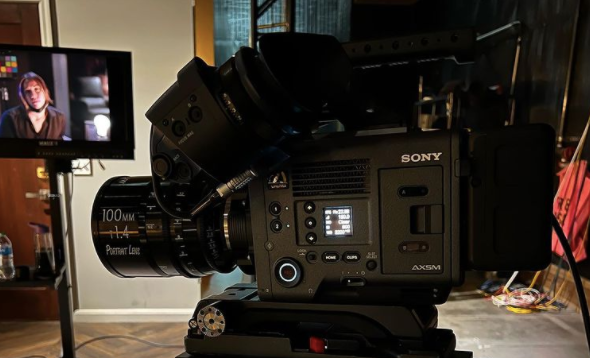First Date with the VENICE 2
Posted by Mike Thomas on 30th Nov 2021
Today I laid hands on the VENICE 2 8K for the first time. From the front it’s fairly indistinguishable from the original Venice and looking from the side it still looks like one without a R7 recorder. That’s sort of one of the major features. Smaller and lighter. A constant complaint about the VENICE was that it’s too big and heavy for gimbals. Problem solved!
Recently Sony have been upgrading their sensors and processors at a rapid rate. The A7S and the FX6 are examples of this. The new family have extremely high read rates negating the need for Global Shutters which used to be the holy grail and a must, to get rid of the very annoying rolling shutter. The main issue with Global Shutter is that it introduces noise to the image, rolling shutter gone, noise introduced! The 8K sensor version of the VENICE 2 is the very latest generation from Sony with extremely high read rates, all but banishing jello to ancient history, high resolution and amazing picture quality with even more Dynamic Range. The VENICE was a very hard act to follow but the Sony guys have managed it with an exceptional sensor.
In crop mode the VENICE 2 8K has 5.6K in S35 allowing high res, high quality shots on S35 glass and is a massive benefit to anybody wanting to use zooms. This resolution in S35 has mostly been the domain of Red and the reason why Red is dominant in Natural History. 5.6K in S35 allows use of the big 1000mm zooms then allows you to frame and stabilise for 4K.
It’s worth noting that when moving to FF 8K the data rates jump quite a lot compared to FF 6K on the original VENICE. FF 8.2K 17:9 uses 35.6M Pixels compared to 19.3M in FF 6K 17:9, hence the new S66 cards to accommodate the higher frame rates. The data rate for FF 17:9 25P in XOCN-ST on the 8K is 2752 Mbps where it is only 1490 Mbps on the 6K Cameras, worth remembering.
Common to both new cameras:
- Sony have improved the stuttering on the viewfinder display when shooting Off Speed.
- The Base Iso levels on the 8K are higher, 800 as opposed to 500, then 3200 compared to 2500. More, smaller pixels = slightly less sensitive.
- EI Changes applied directly to Slog3 Outputs
- Simultaneous 4K and HD outputs
- 4K Output with LUT
- Zoom to Fit i.e. Full Frame recording with 17:9 Monitoring
The original VENICE is not dead by any means. If you want XAVC 4K, you need the original Sony VENICE. If you want a HD proxy, you will also need VENICE. If you want to use a Rialto, it’s either VENICE or VENICE 2 6K. But for certain, the VENICE2 8K will be a big player in the years to come, probably even more dominant than the current VENICE. Arri and Red must be worried!
Find out more about VENICE 2 including the latest on features, specs and pricing, by visiting our product page today.

